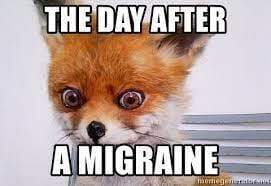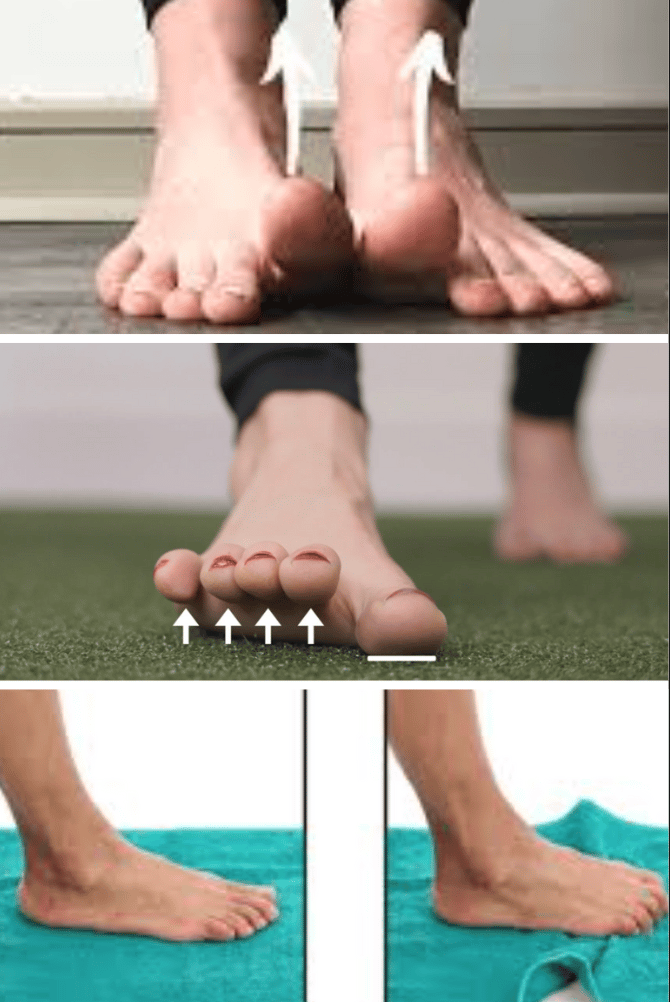- More Relief. Less Medication.
- Posts
- 🧠 Why Vestibular Migraine is Often Overlooked...
🧠 Why Vestibular Migraine is Often Overlooked...
Here's why you feel like you're on a boat, but you're not...

Your hub for natural migraine management. More Relief. Less Medication.
The Migraine Mentors Newsletter
📣 We asked… YOU delivered… And we hear you!
🙏 THANK YOU to those who submitted feedback over these last two weeks.
We’ve had A TON of great input from our readers over the last few weeks who want to know more about managing migraine symptoms…
✅ So, moving forward, we’re going to focus more on specific conditions and discuss some of the finer points of migraine treatment options, such as:
How to manage symptoms with specific dietary changes…
When to look into dietary triggers, food sensitivities, and allergies…
What to do about hormonal changes, both before, during, and after menopause…
Who to see for treatment and therapy for migraine symptoms…
How to prepare for a migraine when you’re not at home…
When to use medications vs supplements vs devices vs literally everything else…
And many other topics of discussion… So stay tuned!
We’ve been naturally treating patients who suffer from migraine symptoms for 15+ years by addressing the root causes and helping people structurally, neurologically, and nutritionally.
And in this newsletter, we will give you everything we’ve learned.
For Free.
🧠 The Migraine Mentors
First time reading?! Sign up HERE.

Here’s What’s Cookin’ This Week
🔈️ The Migraine Mentors Minicast - Podcast Series = 🔥 NEW!
How To Properly Treat Vestibular Migraine
💣️ This Week’s Sponsor
BetterSleep - Wanna Sleep Better? Here’s How!
🥡 Weekly Take-Out
Meme of The Week - Am I Hung Over Or Is That My Migraine Calling Again?
📜 This Week’s Top Article
Why Vestibular Migraine is Often Overlooked
🧨 Pro Tip
Dizziness Strategies
🍴 Migraine-Friendly Recipe of the Week
Turkey and Kale Stuffed Bell Peppers

🗞️ MIGRAINE MINICAST
How To Properly Treat Vestibular Migraine
Our most recent podcast episode discusses the similarities and differences between vestibular migraine and other types of migraine syndromes… And how they share far more similarities than differences.
If you struggle with vestibular migraine symptoms, this is a MUST WATCH.
🔻 🔻 🔻 🔻 Click the link below to check it out! 🔻 🔻 🔻 🔻

The #1 App That Helps You Fall Asleep In Minutes
BetterSleep, the 5 star app that focuses on helping users sleep better and feel better daily.
Build and layer a unique personalized mix from over 300 unique sounds such as: green noise, ocean waves, heavy rain, arctic storms or even background bustle in a city cafe! Use sound science to send yourself to sleep and improve your restlessness.
By building your perfect dreamy soundscape and watch your sleep and your mornings improve in just 7 days!

🥡 WEEKLY TAKE-OUT
Meme of The Week

The Migraine Hangover is Real

📜 TOP ARTICLE
Why Vestibular Migraine is Often Overlooked
Vestibular migraine is a complex condition affecting balance, motion, and overall well-being.
If you’re one of the unfortunate individuals who commonly deal with dizziness, vertigo, or that unsettling “off-balance” feeling alongside your migraine, this article is for you.
❓️ What is a Vestibular Migraine?
Vestibular migraine is a type of migraine that primarily impacts your balance and spatial awareness rather than just causing severe head pain.
It’s still a migraine; There’s just additional collateral damage that comes with it that can make life far more complex…
🗒️ Symptoms of vestibular migraine often include:
Vertigo (a sensation of spinning or tilting)
Dizziness or lightheadedness
Difficulty focusing or disorientation
Nausea, often accompanied by sensitivity to light or sound
Episodes can last anywhere from minutes to days and are often triggered by changes in sensory input or hormonal shifts.
More importantly, they can be scary as hell and make you question A LOT.
💭 What Causes Vestibular Migraine?
Vestibular migraine often results from dysfunction in the brain areas responsible for sensory integration.
Once again, and we can’t reiterate this enough: Vestibular migraine is still a migraine, just with additional neurological symptoms.
Clinically, nearly all migraine conditions share similar underlying neurological metabolic, and inflammatory changes…
We just give them different names when they manifest in different ways (Ex. Ocular Migraine vs. Vestibular Migraine vs. Migraine w/aura).
☝️ Triggers for vestibular migraine can vary widely but often include:
Stress: Heightened cortisol levels disrupt your sensory processing and can trigger inflammatory cascades in the brain and Trigeminal system.
Hormonal Fluctuations: Changes in estrogen, especially during menstruation or menopause, are often the culprit for triggering symptoms.
Dietary Triggers: Caffeine, aged cheese, red wine, and alcohol are common culprits; Individual food sensitivities or allergies are also common triggers for the neuro-inflammatory cascade that follows.
Sensory Overload: Bright lights, loud sounds, or motion (like car rides) can worsen symptoms, especially if preceded by a concussion or head trauma.
Understanding your unique triggers is the first step to managing vestibular migraine symptoms effectively.
Once your triggers are known, it’s time to find treatment.
📈 What Are the Best Strategies to Manage Vestibular Migraine?
Here’s a great check list to use for reducing vestibular migraine symptoms naturally:
🧠 Improve Your Diet to Support Gut and Brain Balance
Certain foods can stabilize your nervous system and reduce triggers:
Magnesium-Rich Foods: Nuts, seeds, and dark leafy greens to regulate nerve activity and provide adequate nutrients.
Anti-Inflammatory Foods: Omega-3s (salmon, chia seeds, etc.) and spices like turmeric and curcumin.
Proper Hydration: Dehydration can make dizziness worse, so aim for at least 2 liters of water daily. Make sure to have electrolytes with your water to support adequate cellular function!
High Fiber Foods: Dark leafy vegetables, fruits (specifically berries), and organic sources of complex carbohydrates can improve gut function and balance the gut microbiome.
⚖️ Calm Your Nervous System with Sensory Reset Techniques
Vestibular migraine symptoms thrive on sensory overload. You can combat this by:
Practicing belly breathing or mindfulness to reset your brain’s sensory circuits and calm down your nervous system.
Doing grounding exercises like barefoot walking to stabilize your balance and get yourself into nature.
Using noise-canceling headphones or dim lighting in overwhelming environments to decrease sensory input.
💦 Move Your Body to Retrain Physical and Neurological Balance
Movement is essential, so it’s important to pace yourself.
Start with gentle exercises like walking, yoga, or tai chi.
Try vestibular rehabilitation therapy (VRT) to strengthen your brain-ear connection.
Be sure to avoid overexertion, which can worsen dizziness.
💊 Explore Targeted Supplements and Nutrition
Nutritional support can help balance your vestibular system by dampening inflammation and improving brain function.
Try the following:
Magnesium: Reduces nerve hyperactivity and hyperexcitability.
Riboflavin (Vitamin B2): Supports energy metabolism and migraine relief.
Ginger: Calms nausea and dizziness.
CBD: A natural anti-inflammatory that calms the nervous system during flare-ups.
🥼 When To Seek Professional Help
If repeated and sustained lifestyle changes don’t provide relief, consider consulting a specialist.
A highly trained healthcare provider can:
Perform diagnostic tests to evaluate your vestibular system and inner ear.
Recommend treatments like vestibular rehabilitation, personalized nutrition, medications, or individualized therapies.
Identify triggers through dietary analysis or hormonal testing.
And perform an array of structural, neurological, and metabolic assessments to get laser focused on your treatment.
🩺 Vestibular Migraine Is Treatable With The Right Approach To Care
While vestibular migraine symptoms can feel overwhelming, they’re not permanent.
By addressing underlying triggers, improving sensory resilience, and seeking targeted care, you can regain control of your balance and your life…
We’ve seen it in our office and know it’s possible!
Vestibular migraines are complex but manageable. Relief is possible, and with the right tools, you can thrive.
💡 Stay tuned for next week’s newsletter!

🧨 MIGRAINE PRO TIP
Dizziness Strategies
🫠 If you’ve ever been dizzy during a migraine, we’re really sorry.
Debilitating head pain is bad enough without nausea. And we all know throwing up when your head is pounding always makes it hurt less.
This section will give you some helpful tips to feel better during an attack, and also guidance on how to pick the right treatment to prevent future attacks.
❓️ How To Find The Right Care
Ultimately, treating vestibular migraine and dizziness in general comes down to picking the right path.
2️⃣ The 2 paths are peripheral and central dizziness approaches to care.
👨⚕️ Peripheral care is what you get it you’ve ever been to a vestibular PT.
👂️ They’re really good at treating issues with the inner ear itself. (Hardware issues.)
But be careful… Not all dizziness issues are hardware issues!
🖥️ Sometimes it’s a software issue, which is central dizziness.
😵💫 Things like cervicogenic vertigo (dizziness that comes from your neck) and visually induced vertigo (dizziness that comes from things moving really fast) are examples.
These require a more nuanced approach.
📩 If you have questions, just email us and set up a consult. We can help find you care in your area based on what’s happening.
The Bottom Line: Make sure you vet your provider and make sure there is a strategy for determining where your dizziness issues are coming from.
✅ Pro Tip: Use Your Feet to Ground Yourself
Your vestibular system is directly connected to your feet.
If you’ve ever stepped on something slippery and had your feet react on their own, that’s the connection at work.
👣 If you’re dizzy, an easy way to stabilize the system without risking more dizziness is to vibrate the bottom of your feet. (Calves and shins work too)
We use this clinically all the time when the rehab gets to be too intense.
We also use foot strengthening/dexterity exercises to improve the communication from the feet into the vestibular system.
⬇️ Try the following to improve the movement of your feet and toes ⬇️


🍴MIGRAINE-FRIENDLY RECIPE
Turkey and Kale Stuffed Bell Peppers

Instructions
Turkey and Kale Stuffed Bell Peppers
Ingredients:
- 1 lb ground turkey (preferably organic and free-range)
- 4 bell peppers (any color)
- 2 cups fresh kale, chopped
- 1 small onion, finely chopped (optional, as onions can be a trigger for some)
- 2 garlic cloves, minced
- 1 teaspoon olive oil
- 1 teaspoon dried oregano
- 1 teaspoon dried basil
- Salt and pepper to taste
- 1/2 cup low-sodium chicken broth or water
Instructions:
1. Preheat the Oven: Preheat your oven to 375°F (190°C).
2. Prepare the Bell Peppers: Halve each bell pepper lengthwise, removing the seeds and membranes. Place them cut-side up in a baking dish.
3. Cook the Turkey Mixture: In a large skillet, heat the olive oil over medium heat. If using, add the chopped onion and cook until softened, about 3-4 minutes. Add the minced garlic and cook for another minute.
4. Add Turkey and Spices: Add the ground turkey to the skillet, breaking it apart with a spoon. Cook until browned, about 5-7 minutes. Stir in the chopped kale, oregano, basil, salt, and pepper. Cook until the kale has wilted.
5. Stuff the Peppers: Spoon the turkey mixture into the bell pepper halves. Pour the chicken broth or water into the bottom of the baking dish to add moisture.
6. Bake: Cover the dish with aluminum foil and bake for 25-30 minutes. If using Parmesan cheese, remove the foil during the last 5-10 minutes of baking and sprinkle the cheese on top until melted and bubbly.
7. Serve: Allow to cool slightly before serving. Enjoy your nutritious, migraine-friendly meal!
Why It’s Migraine Friendly
1. Ground Turkey:
- Low in Tyramine: Turkey is a good source of lean protein that generally contains low levels of tyramine, a compound that can trigger migraine symptoms for sensitive individuals.
- Rich in Nutrients: Ground turkey is packed with B-vitamins, which may help support brain health and reduce the risk of migraine symptoms.
2. Bell Peppers:
- Low Glycemic Index: Bell peppers are low in carbohydrates and have a low glycemic index (GI). This means they won't cause significant spikes in blood sugar levels, which can be a migraine trigger.
- Low Histamine: Fresh bell peppers are considered non-histamine or low-histamine foods. They are also packed with antioxidants and vitamins, making them a nutritious addition to the recipe without contributing significant histamine levels.
3. Kale:
- Low Histamine: Kale is naturally low in histamine, making it suitable for those on a low-histamine diet, which can be beneficial for some migraine sufferers.
- Rich in Magnesium: Kale is a good source of magnesium, a mineral that has been shown to help prevent migraines in some individuals. Magnesium helps to relax blood vessels and may reduce the frequency and intensity of migraine symptoms.
- High Fiber Content: The high fiber content in kale aids in regulating blood sugar levels. Blood sugar imbalances can be a trigger for migraine symptoms, and consuming fiber-rich foods can help stabilize those levels.

How did you like this week's email? |

